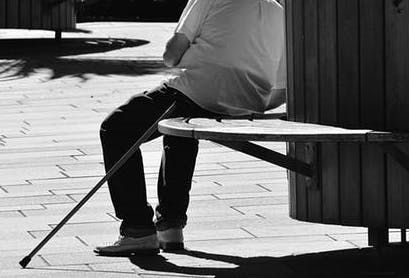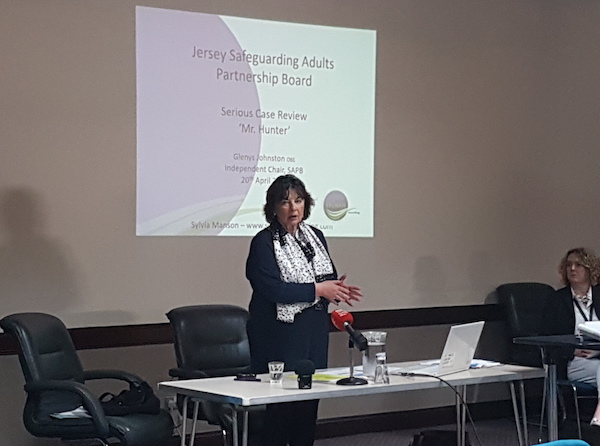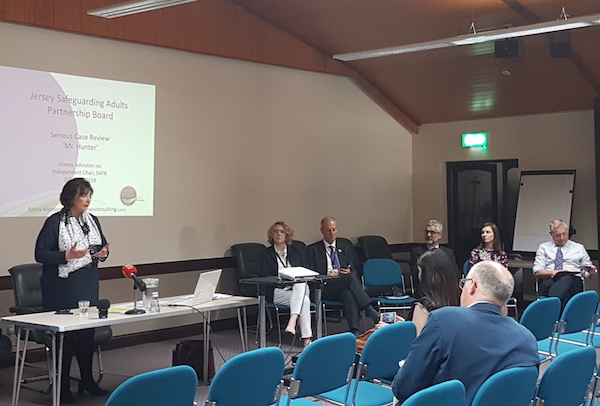

A serious case review into the death of an elderly man who lived without sanitation or running water, has revealed more work needs to be done with the parishes to improve their understanding of self-neglect.
89-year-old John Ainsworth, died last year after decades of choosing to live in a wooden hut in a field, and then later in a caravan.
His living arrangements, which were infested with rats, were only alerted to agencies a few months before his death, after paramedics were called to his home and made an official referral of self-neglect to Adult Social Care, prompting intervention by the multi-agency safeguarding team.
But this wasn’t the first time officials knew of the way of life Mr Ainsworth had chosen for himself.
Since the 1990’s the Honorary Police, Parish Constable and a farmer - whose land he lived on - kept an eye on Mr Ainsworth through weekly visits. The Parish even supplied Mr Ainsworth with a caravan, without planning permission, after the wooden containers he was living in were destroyed in a fire in 2005.
The States Police became involved when they came across Mr Ainsworth driving a defective car in 2015. They made a note of his living arrangements under an ‘Adult Protection Notice’ but it didn’t reach the other agencies as the self-neglect wasn't assessed as third party abuse.
Although the police tried to get Mr Ainsworth to receive support through the island’s care system, he refused – leading them to agree to fortnightly wellbeing checks instead.
But this all changed when his health deteriorated in 2016, leading the paramedics to visit his home to take him to the hospital for treatment.

Pictured: John AInsworth's death sparked a serious case review by the Safeguarding Partnership Board.
Safeguarding agencies refused to let Mr Ainsworth return to the squalid conditions he had been living in, and his caravan was condemned against his wishes under environmental health regulations.
But as a hospital assessment concluded that Mr Ainsworth was capable of making his own decisions, he discharged himself and was put up in care homes and hotels over the next few weeks by social services, which according to his cousin, made him “very unhappy” as it was a “barren environment” something he couldn’t get used to after living in a field for decades.
To fulfil his wishes, and with no other options available, the parish constable put up a portacabin with basic facilities in the same field as the caravan, as approved by the Environment Minister.
But Mr Ainsworth didn’t live there very long, as he was admitted to hospital by his GP due to an infection in his leg. Mr Ainsworth died a few days later after refusing a life-saving amputation, a consenquence he was apparently aware off.
Pictured: Hospital assessments found Mr Ainsworth had a mental capacity to make decisions regarding his health and living arrangements.
A review by the Safeguarding Board found that there’s no evidence to show Mr Ainsworth’s death was directly linked to his living conditions.
It also stated that Mr Ainsworth “would not have defined himself as self-neglecting and nor did his next of kin” despite self-neglect involving a lack of self-care of their own health and safety as well as their environment.
It acknowledged and praised the good work done by the multi-agency process, once they became involved in 2016, but states that they would have been able to offer their assistance earlier if the referral had been made sooner.
It expresses the need for Parishes to understand and respond to self-neglect by more training and a better partnership with the agencies.
The review also concluded that the support from the agencies would have been better if there had been “greater involvement of his next of kin to fully consider his wellbeing and a proportionate response to the risks presented.”
Despite an effort from the care professionals to try to build a relationship with Mr Ainsworth, in order for him to accept help, his cousin felt that “no-one was really able to take the time needed to fully understand him.”

Pictured: The Safeguarding Partnership Board, which is chaired by Glenys Johnston, concluded that more work is needed with parishes for them to respond to self-neglect.
The case highlighted a need to develop self-neglect procedures and resources as well as review the expectations and role of the ‘Lead Worker’ in situations like this.
Mr Ainworths’s death has also sparked the need for more preventative work in self-neglect cases as well as better processes to manage longer-term cases that go beyond the initial protection plan.
It also highlighted the importance to bring in the Capacity and Self Determination (Jersey) Law 2016, as the review highlighted the challenges and ethical dilemmas of working with people defined as self-neglecting with mental capacity to make informed decisions.
Chair of the Board, Glenys Johnston said; “The Safeguarding Partnership Board has already taken positive steps to address self-neglect in Jersey. The review has identified areas that may further strengthen multi-agency work in responding to self-neglect. The review also highlighted areas that will strengthen multi-agency work in responding to self-neglect and the valuable contribution that the parishes can play in safeguarding. The purpose of an SCR is not to apportion blame but to ensure that lessons are learned and improve the way adults are safeguarded.”
Comments
Comments on this story express the views of the commentator only, not Bailiwick Publishing. We are unable to guarantee the accuracy of any of those comments.